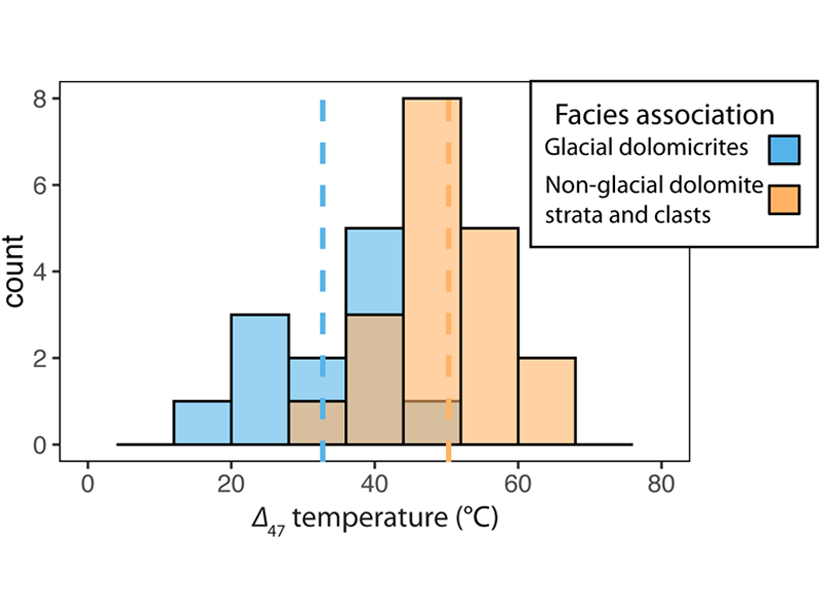Source: AGU Advances
Mention major glaciations and many people’s thoughts will go to the geologically recent climate swings across which our species came to be. But some 700 million years ago in the Neoproterozoic Era, at the dawn of our more modern biosphere, Earth’s systems conspired to shape perhaps the most dramatic climate shifts of all, the Snowball Earth glaciations that saw much of the planet freeze. Knowledge about these events derives from the geologic record of rock types and associations, which provide strong but non-quantitative constraints. Mackey et al. [2020] for the first time apply the technique of clumped isotope thermometry to ancient carbonate rocks from Svalbard, currently in the Arctic but during the Cryogenian, located in the tropics. Their careful work, highlighted in a Viewpoint in this issue by Macdonald [2020], finds a ~25˚C temperature difference between glacial and preglacial units, and opens the door to using such geochemical proxies to more directly investigate biogeochemical cycles in deep time.
Citation: Mackey, T., Jost, A., Creveling, J., & Bergmann, K. [2020]. A decrease to low carbonate clumped isotope temperatures in Cryogenian strata. AGU Advances, 1, e2019AV000159. https://doi.org/10.1029/2019AV000159
—Peter Zeitler, Editor, AGU Advances
Text © 2020. The authors. CC BY-NC-ND 3.0
Except where otherwise noted, images are subject to copyright. Any reuse without express permission from the copyright owner is prohibited.

